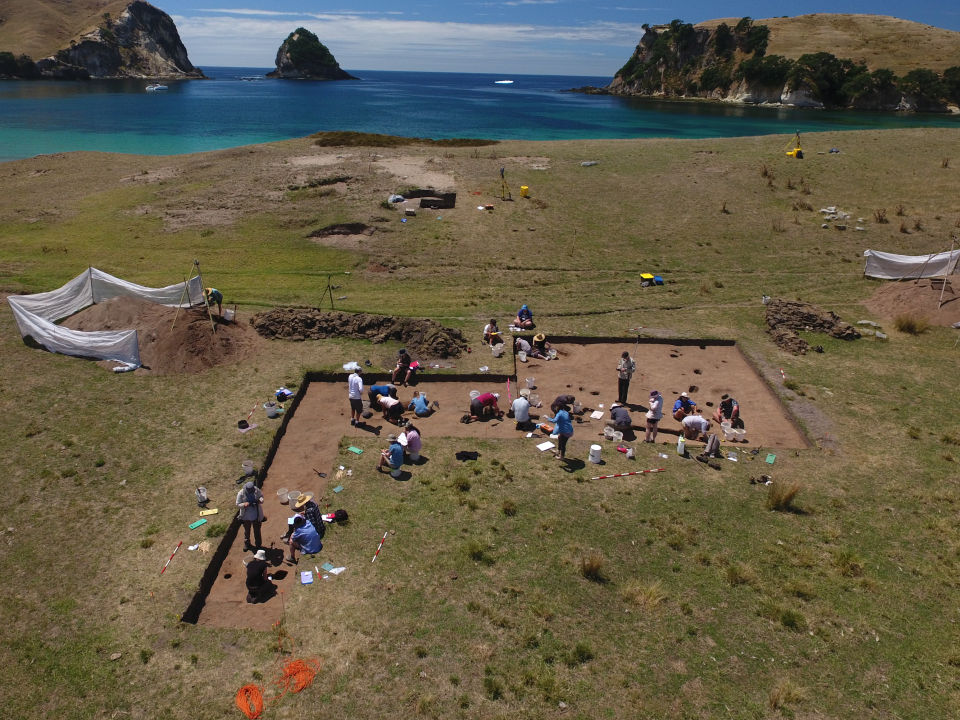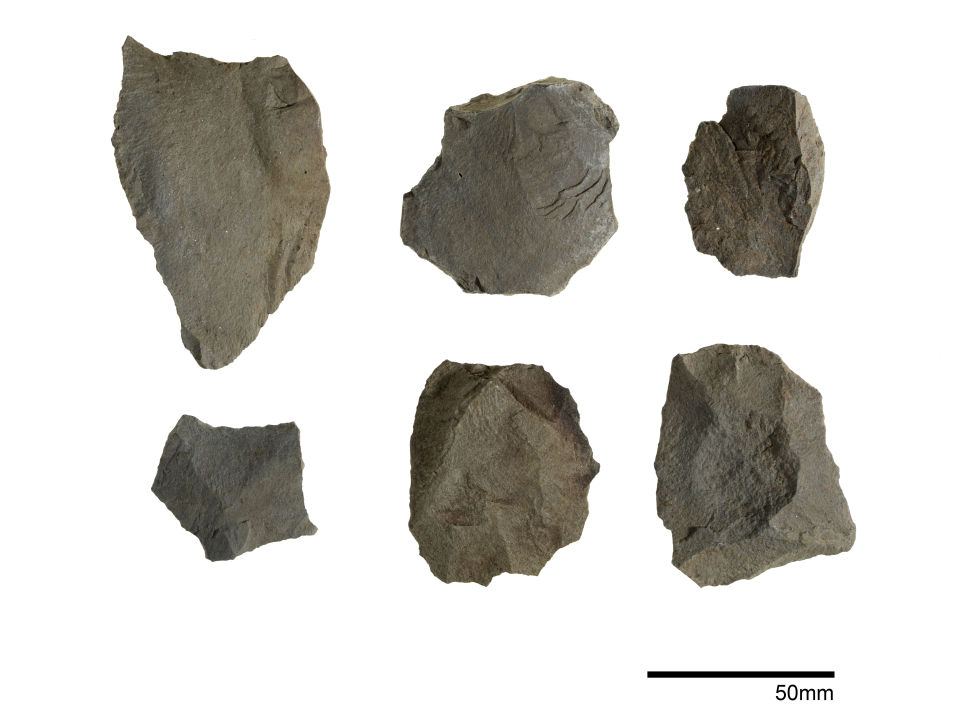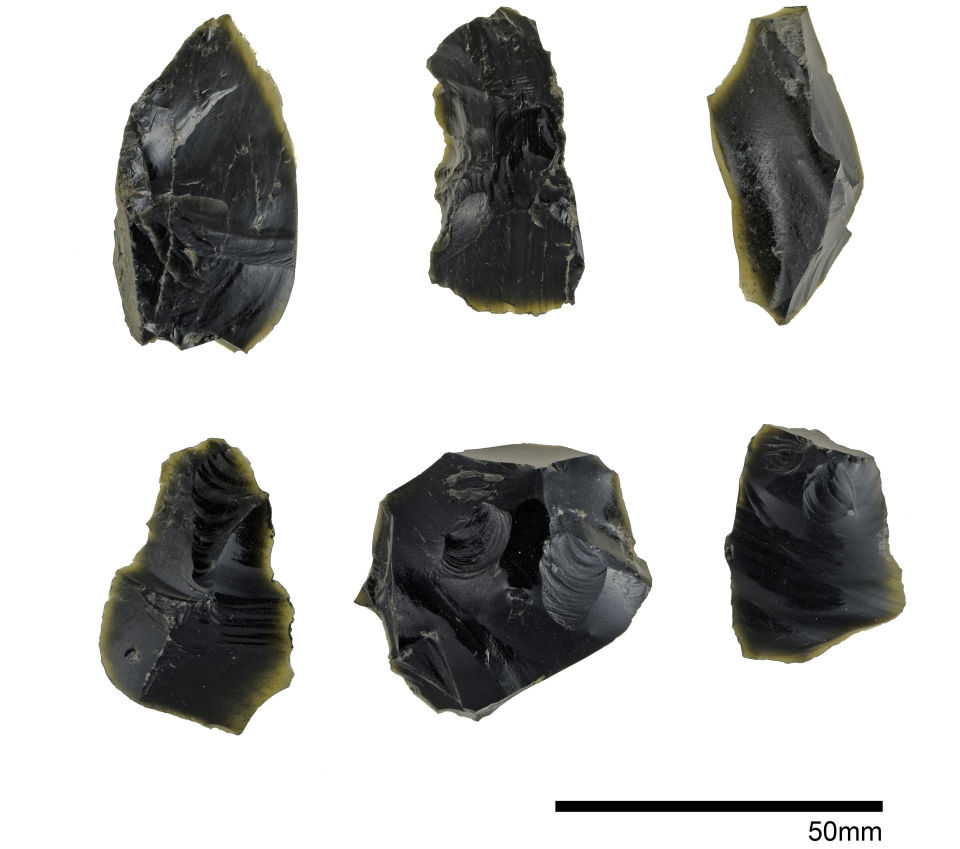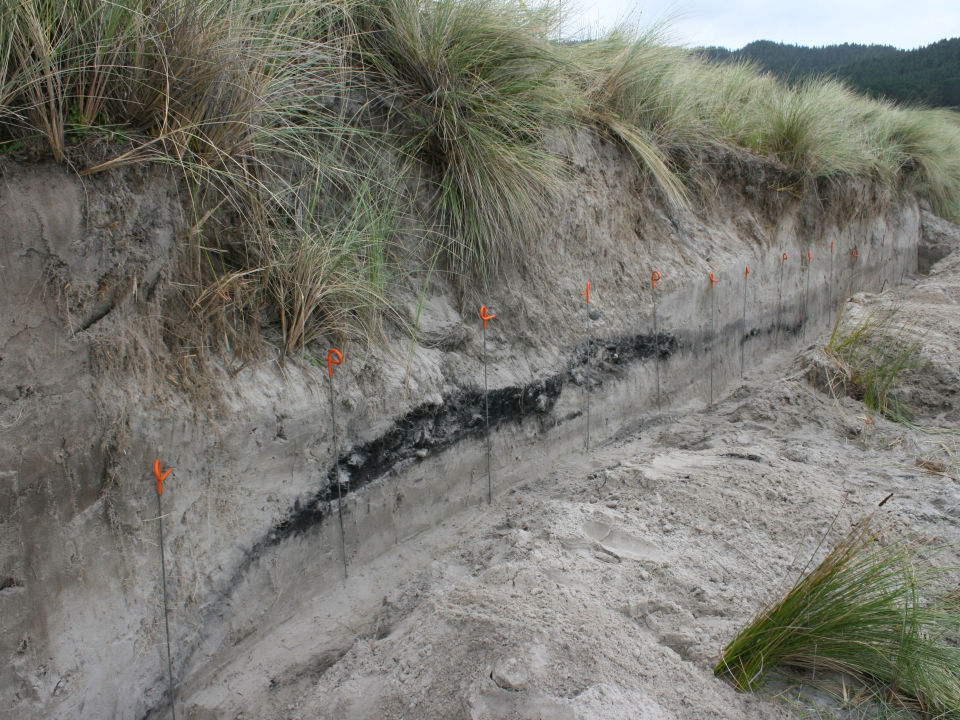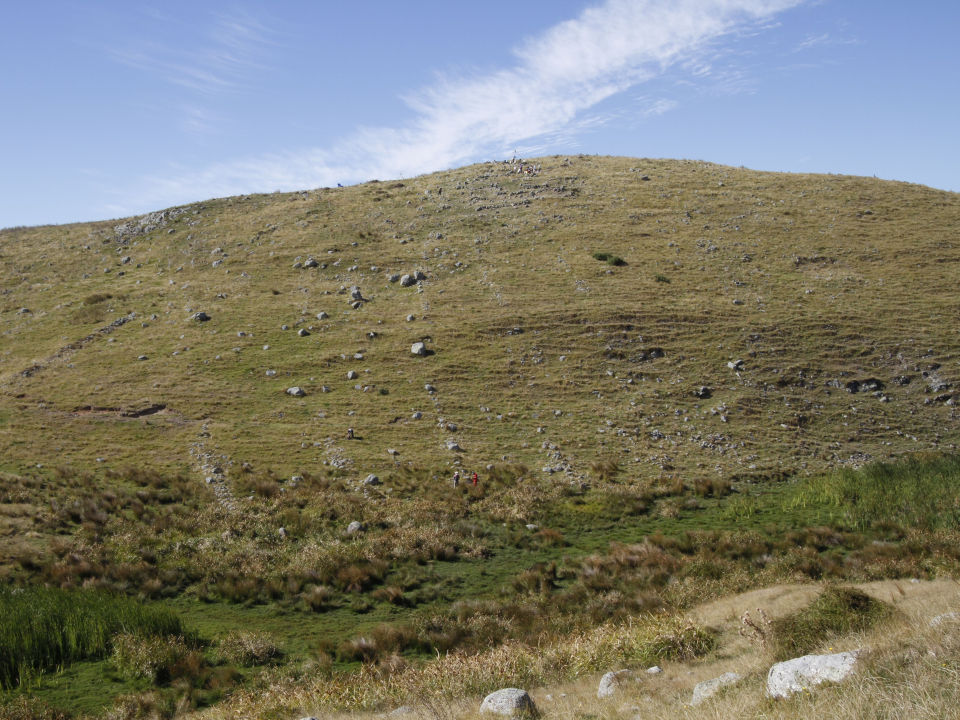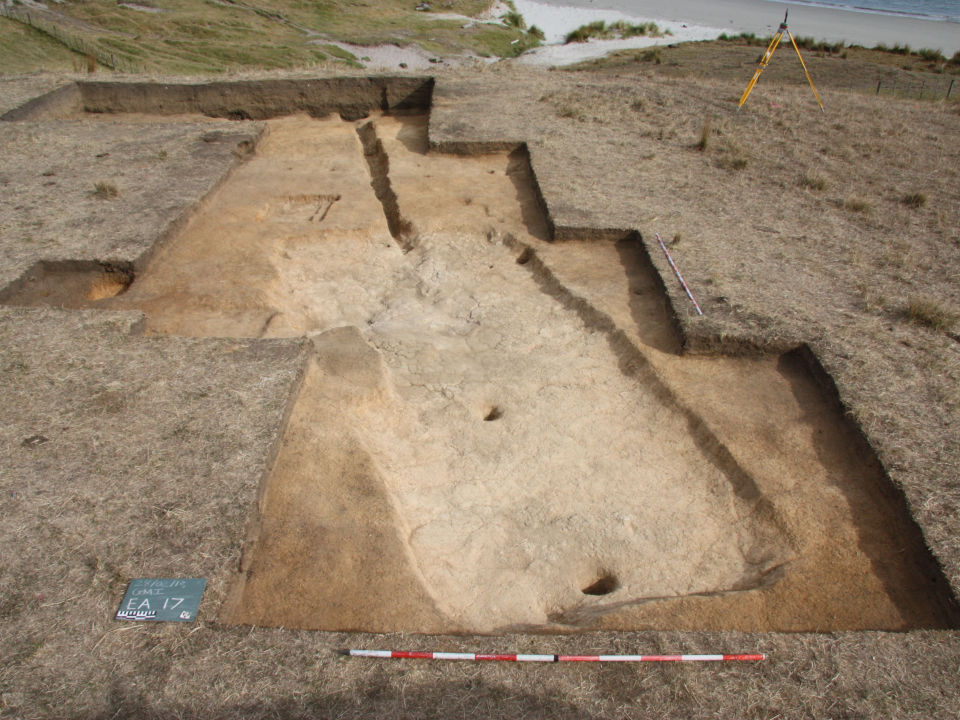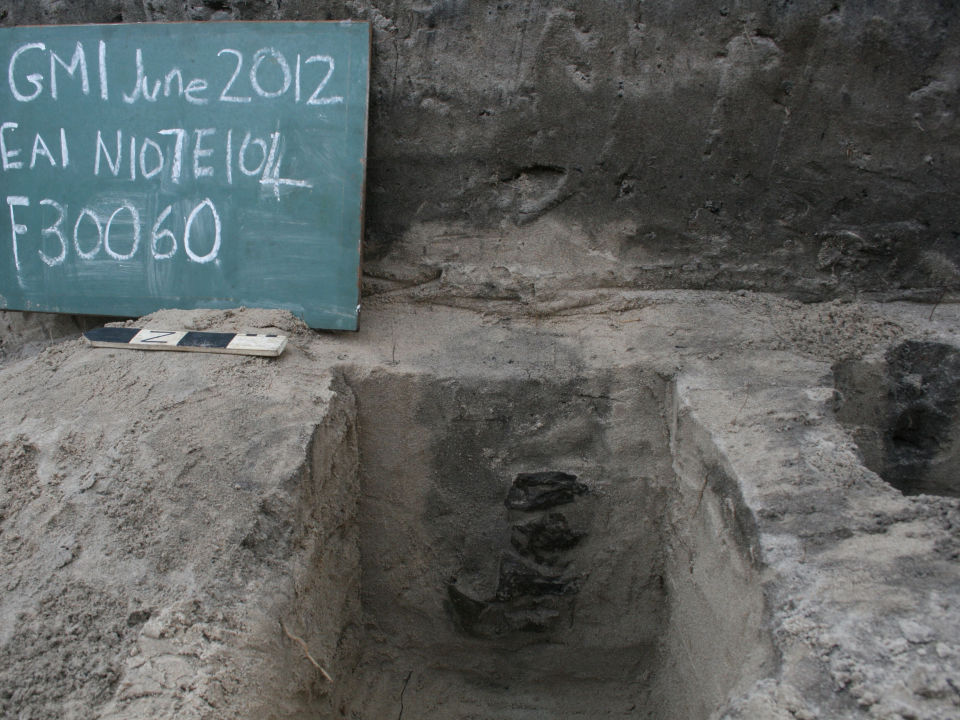The cultural landscape
The island has a well-preserved cultural landscape. There are 23 pā defended by ditches and banks. In the northern part of the island there are large areas of Māori gardens. There are sites where stone tools were made. There are also sites with depressions in the ground showing former kūmara storage pits. Finally, there are sites with shell midden and fish bone.
Toolmaking
The Coromandel region has some of the most valuable stone resources in the North Island. Archaeologists have found the following stone materials in excavated sites on the island:
- Basalt from Opito - used to make adzes and general use tools.
- Obsidian from Cook’s Beach, Hahei, Mayor Island and Whangamata – used for cutting and scraping.
- Chert from Ahuahu - a fine-grained volcanic stone which comes in several colours. Flakes of this stone made cutting and scraping tools.
- Petrified wood – used to make various tools.
Archaeologists have also found artefacts made from stone that probably came from the Nelson area. This shows the Polynesian settlers of Aotearoa were geologists, exploring the new land and identifying good quality stone to make tools.
A shell-midden revealed
In 2009 a storm eroded about 10 metres of sand from White’s Beach in the centre of the island. This exposed a shell midden and a charcoal-rich black layer about 1.5 metres down from the top of the dune. Archaeologists collected samples of shell and charcoal. Sea mammal bones, fish and dog bones were present in the sample. The shell was radiocarbon dated to around the late 1400s.
Moa bones sometimes emerge from a dig on the island. But with all the rich seafood available, they would not have been part of the islanders’ everyday diet. These birds were probably ferried in by waka. Moa died out within 200 years after human arrival due to predation, so the presence of moa indicates the site is old.
The evidence for gardening
There are 21 former gardening areas in the northern part of the island. The largest is at Tamewhera in the northwest part of the island. It covers several hectares.
Archaeologists found surface stones arranged into lines down the slope. The lines consist of single stones placed end on end. In other sites stones have been piled up to form a row elevated above the ground surface. These are cross walls. The addition of soil on the uphill side behind these walls creates deeper soils for gardening.
Other less obvious garden areas consist of parallel drains running down a slope. These are now only visible at certain times of the day or seasonal conditions. Kūmara storage pits were often left open when finished with. These are now visible as roughly rectangular depressions in the ground. Kūmara pits are present in several sites, including pā.
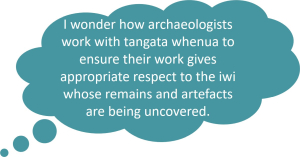
Pits on Stingray Point Pā
Two big kūmara pits excavated on Stingray Point Pā (Matakawau) in 1955 must have held a large quantity of kūmara. Within each pit there were more than 80 postholes. Most of these showed rebuilding of the roof structures as well as later activities on the flat living terrace dug into the infilled pits. There was a complex system of drains inside each pit to remove any water which seeped in through the thatch and soil covering. There were also larger features to drain the water outside the pits.
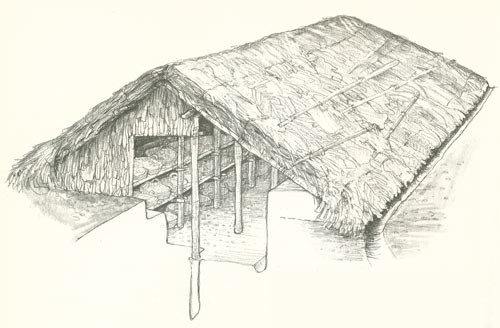
A reconstruction drawing of how such storage structures may have looked.
Source: https://tmrowe.com/2017/04/03/ahuahu-archaeology-on-great-mercury-island/
Discovery of taro in specially constructed Māori gardens
New research from the archaeological project shows that taro, alongside leafy greens such as pūhā and watercress, was an important crop for early Māori on Ahuahu. Archaeologists have analysed buried sediments from swamps and found the pollen of taro and other leafy greens.
The deposits have been radiocarbon-dated to the 14th century, around 600 to 700 years ago. The gardens on Ahuahu are among some of the earliest known of in New Zealand.
The new evidence suggests that Polynesian gardeners adapted the environment to continue growing their staple food, taro. Tūpuna Māori may have initially focused on taro and created specialised wetland gardens for the purpose. Kūmara then became the main crop after AD 1500.
Taro was an important food in tropical Polynesia. Although the taro didn’t grow very large in the cooler New Zealand climate, the gardeners persisted with trying to grow it because of its links with the homeland, and because it was a chiefly food used in hui. Researchers also thought that pre-European Māori gardens were mostly weed free. But the fossil pollen remains from Ahuahu suggest indigenous edible leafy herbs such as watercress and pūhā were common.
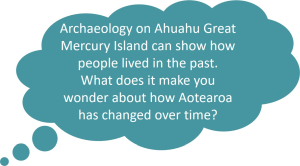
- Archaeology is Amazing - Professor Simon Holdaway leads a team that’s excavating the remains of human settlement on Great Mercury Island.
- Daily video diary - an archaeology student's vlog from an excavation on Ahuahu Great Mercury Island.

